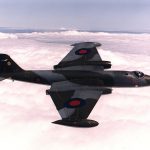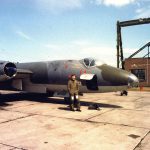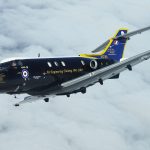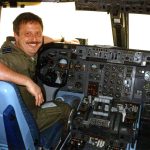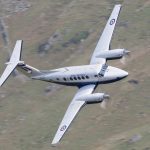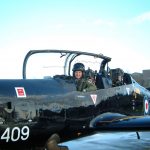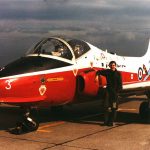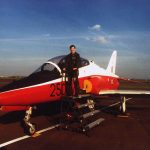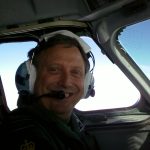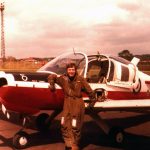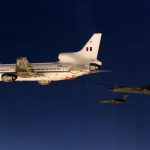IRT Debrief Digest – Capt Steve Oddy – September 2023
EFATO.
Applicants should be aware of the CRM/TEM implications of how they switch off the failed engine’s magnetos and why they close the throttle of the failed engine as the first action in the feathering drills.
In the case of applicants flying the Seneca II or III, they frequently set less than full power on the live engine and try to struggle up the climb with as little as 35”; depending on the precise set-up of an engine.
After the initial actions, correct power on the live should be one of the earliest checks – the health of the live engine is invariably checked but rarely the power output. Missed checks (gear/flap, fire, PAN call) have been frequent.
The test tolerance on Vyse is ±5 kts; however, as Vyse on the Seneca V is 88kts and Vxse is 83kts, flight up to 93 kts is acceptable and transient speeds as low as 83 kts will not have a significant effect on climb performance and will probably be tolerated as long as directional control of the aeroplane is not affected. Sustained speed much below 83 kts on the Seneca V shows a lack of control, especially if directional control is compromised, and is likely to lead to a failed section.
If the EFATO has been given on runway heading and departure instructions have been given requiring a turn after the go around, applicants should maintain runway heading until it is safe to turn.
Having just gone around due weather, asking for a circuit to land or even a further instrument approach in the simulated PAN call is unrealistic. On the subject of RT, during the initial drills, including feathering and gear/flap retract, drills and aircraft handling have absolute priority; any calls from ATC should be met with a polite ‘standby’ until a safe climb rate has been achieved.
Asymmetric Go-around.
Two different errors are prevalent here. Firstly, some applicants will not raise the nose until they have retracted the gear and flap, by which time the aircraft may be doing 120 kts or so and be quite low.
Secondly, some applicants delay raising the flap until they have a positive climb and frequently lose 10 kts in the process.
Both of these errors are very common when the go around is carried out from an instrument approach. In this case the aeroplane will already be at 100 kts with only 10° flap and so holding a low attitude during gear and flap retraction will almost invariably lead to gear overstress. Raising the nose should be coordinated with aircraft speed in order to obtain and maintain Vyse as soon as possible.
Visual Circuit 1.
After the asymmetric go-around the subsequent circuit to land/touch-and-go is not a circling manoeuvre (unless briefed otherwise by the examiner), it is a visual circuit at either normal circuit altitude or at an altitude agreed with the local ATC. Applicants should therefore find out what the circuit altitude and direction are during their initial planning. In addition they should check for any noise abatement procedures (such as at Gloucester on Rwy 27).
If poor asymmetric performance means that published circuit altitude cannot be reached then applicants should inform ATC (and hence the other aeroplanes in the circuit) of their achieved downwind altitude.
A circling manoeuvre will be required is if an approach is made to a runway other than the landing runway (ie EGTC ILS 21 landing on 03) or if, when the screens are removed at ODA, the runway is not ahead in a landable position and circling is required to sort out the problem. Subsequent to such a circling approach a normal or low-level visual circuit will still be required.
Circuit Airmanship.
Although the visual circuit leading to the asymmetric landing is not a test item as such, applicants are expected to exercise judgement and airmanship during this phase. Failures of Section 6, Item d (ATC compliance, airmanship) have been precipitated by applicants failing totally to allow for crosswinds and for hazarding other circuit traffic by poor lookout and airmanship decisions.
Safety is paramount and an early decision to go around for circuit spacing will be appreciated by the examiner.
Downwind Call.
Many applicants are unaware of the correct position for making the “downwind” call. Calling in the correct place is vital in order for ATC to make decisions related to your position.
Final Call.
CAP 413 states that the ‘final’ call should be made when on final approach. Calls in other positions lead to confusion for both other circuit traffic and for ATC and have led to unnecessary go arounds.
There may be circumstances where an early final call would be advantageous – on a tight asymmetric circuit for example. Perhaps a call of ‘turning final’, while not iaw CAP413, would solve this problem and keep everyone orientated.
At military airfields the ‘final’ call is made on commencing the base turn.
Use of Services.
When flying an asymmetric circuit, some applicants flying the Da42 blindly select approach flap halfway round the base turn and land flap at asymmetric committal altitude. On a windy day and from a wide downwind this can often lead to 100% being applied to the live engine. In any aeroplane when asymmetric, services should only be used when there is a need to ‘go down’ or ‘slow down’; trying to counter excess drag with power is poor airmanship and can lead to an unsafe reduction in speed.
Landing.
Landing technique is often poor with the aircraft being forced onto the ground one third of the way down the runway at too high a speed on all 3 wheels. This can lead to bouncing from wheel to wheel with the possibility of a prop strike or nosewheel collapse.
The main problems are trying to keep “2 reds, 2 whites” until the flare, not achieving Vref until entering the flare, lack of pitch trimming in the final stages of the approach (the lack of serviceable electric trims does not help in this respect) and just allowing the control yoke forward as soon as the aircraft touches down.
If the aircraft won’t stay on the ground with the stick held back then it has been landed too fast.
The aim should be to achieve threshold speed at the threshold and then touch down abeam the PAPIs at the correct speed. Brakes should only be used after landing as and when necessary; after a landing at the right speed in the correct place there will be hardly any need to use the brakes on most runways.

